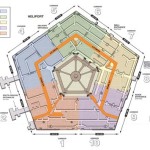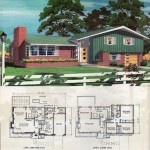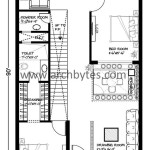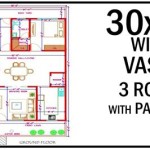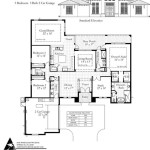Drainage Plans for Your House: A Brisbane Homeowner's Guide
Effective drainage is crucial for protecting a Brisbane home from water damage. The subtropical climate, characterized by periods of intense rainfall, necessitates well-designed drainage systems to prevent issues like foundation damage, soil erosion, and mold growth. Understanding the key components of a residential drainage plan is essential for homeowners.
Key Components of a Residential Drainage Plan
A comprehensive drainage plan addresses several critical areas:
* Surface Water Management: This involves directing rainwater away from the house and other structures. * Subsurface Drainage: This system manages groundwater and prevents it from accumulating around the foundation. * Grading and Sloping: Proper grading ensures water flows away from the house. * Gutters and Downspouts: These collect rainwater from the roof and direct it to designated discharge points. * Drainage Pits and Channels: These components collect and convey water to appropriate outlets.Understanding Brisbane's Specific Drainage Requirements
Brisbane's unique climate and soil conditions influence drainage system design. The high-intensity rainfall events common to the region require systems capable of handling large volumes of water quickly. Additionally, the clay-based soils found in many areas can impede drainage, necessitating specific design considerations.
Council Regulations and Approvals
Brisbane City Council has specific regulations governing drainage systems for residential properties. These regulations aim to ensure proper drainage and prevent adverse impacts on neighboring properties. Homeowners must obtain necessary approvals before implementing any drainage works. Key elements include: * Compliance with the Brisbane City Plan 2014. * Obtaining a Plumbing and Drainage Approval. * Ensuring compliance with stormwater management requirements. * Adhering to regulations regarding connection to council drainage infrastructure.
Assessment of Your Property's Drainage Needs
A thorough assessment of your property is the first step in developing an effective drainage plan. This involves: * Site Inspection: Identifying existing drainage features, potential problem areas, and the direction of water flow. * Soil Analysis: Determining the soil type and its permeability to understand how it will affect drainage. * Rainfall Data: Considering historical rainfall data for the region to design a system capable of handling expected water volumes. * Topography: Analyzing the slope of the land to determine the natural drainage patterns.
Designing Your Drainage System
Based on the property assessment, a tailored drainage system can be designed. This may include: * Surface Drainage Solutions: Implementing swales, French drains, or surface channels to direct water away from the house. * Subsurface Drainage Systems: Installing perforated pipes and gravel beds to manage groundwater levels. * Grading and Landscaping Modifications: Reshaping the land to ensure proper water flow and prevent pooling. * Integration with Existing Infrastructure: Connecting to council stormwater systems where applicable.
Choosing the Right Drainage Materials
Selecting appropriate materials is crucial for the longevity and effectiveness of the drainage system. Common materials include: * PVC Pipes: Lightweight, durable, and resistant to corrosion. * Concrete Pipes: Strong and long-lasting but can be heavier and more expensive. * Drainage Gravel: Facilitates water flow and filtration. * Geotextiles: Prevent soil erosion and clogging of drainage systems. * Drainage Cell: High void ratio for effective water management under paved areas.
Installation and Maintenance
Proper installation is vital for optimal system performance. It is often recommended to engage licensed plumbers and drainers for this process. Regular maintenance is also essential to prevent blockages and ensure long-term effectiveness. Key maintenance practices include: * Regular Inspection: Checking for signs of blockage or damage. * Cleaning Gutters and Downspouts: Removing debris to ensure free flow of water. * Flushing Drainage Lines: Periodically flushing the system to remove sediment buildup. * Landscaping Maintenance: Ensuring vegetation does not obstruct drainage paths.
Working with Professionals
Consulting with qualified professionals is highly recommended throughout the drainage planning and implementation process. This can include: * Licensed Plumbers and Drainers: For installation and maintenance of drainage systems. * Landscape Architects: For integrating drainage solutions with landscaping design. * Geotechnical Engineers: For soil analysis and recommendations for complex drainage challenges. * Surveyors: To accurately assess the property's topography and drainage patterns.
Long-Term Drainage Management
Effective drainage is an ongoing process. Regular monitoring and maintenance, combined with proactive measures to address potential issues, will ensure a dry and protected home for years to come. By understanding the key principles of drainage planning and Brisbane's specific requirements, homeowners can make informed decisions to safeguard their properties from water damage.

How To Obtain Before You Dig Plans

Why You Need A Drainage Plan For Your New Home Homes By Howe

Where Can I Find Drainage Plans For My House Soho Real Estate

Where Can I Find Drainage Plans For My House Soho Real Estate

Where Can I Find Drainage Plans For My House Soho Real Estate

Why You Need A Drainage Plan For Your New Home Homes By Howe

Where Can I Find Drainage Plans For My House Soho Real Estate

Subdivision Restrictions Town Planners Brisbane Consult Planning

Backflow Devices And Dams Brisbane City Council

Sanitary Drainage In Reactive Or Unstable Soils Plumbing Connection

